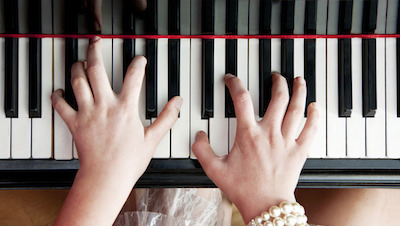In the world of musical instruments, there are four main groups: woodwinds, brass, strings and percussion.
Woodwinds – woodwind instruments produce a sound by blowing into a mouthpiece, some with a reed attached to make sound. Think recorder, flute, clarinet, saxophone, and bassoon.
Brass – brass instruments are played by buzzing the lips into the mouthpiece. Think trumpet, trombone, tuba and baritone.
String – string instruments are played by using a blow or by plucking the strings with your fingers. Think violin, cello, bass, guitar and harp.
Percussion – percussion instruments are struck with sticks or mallets. In some cases they can also be pitched and play different notes or sounds. Think drums, cymbals, chimes, xylophone, and piano.
To produce music, melody, harmony and rhythm must come together in sound and style.
Melody results from playing notes in different pitches, often with a distinguishable and sing-a-long tune.
Harmony comes from the relationship between different notes played at the same time as the harmony. It compliments the tune.
Rhythm is the beat or the pulse of the music.
What makes the piano different is it has the capability of producing all three. It is the only instrument to use both hands to produce music. While other instruments may be held by both hands, using fingers on both hands to connect and produce one note, a piano can produce notes with either hand.
Ask a musician and most will agree that while piano may be one of the easiest instruments to begin to play, it’s one of the most difficult to master over a lifetime. There is always a new challenge, something else to learn, something else to master.
No matter what level of musician you are, the piano offers something for everyone.

